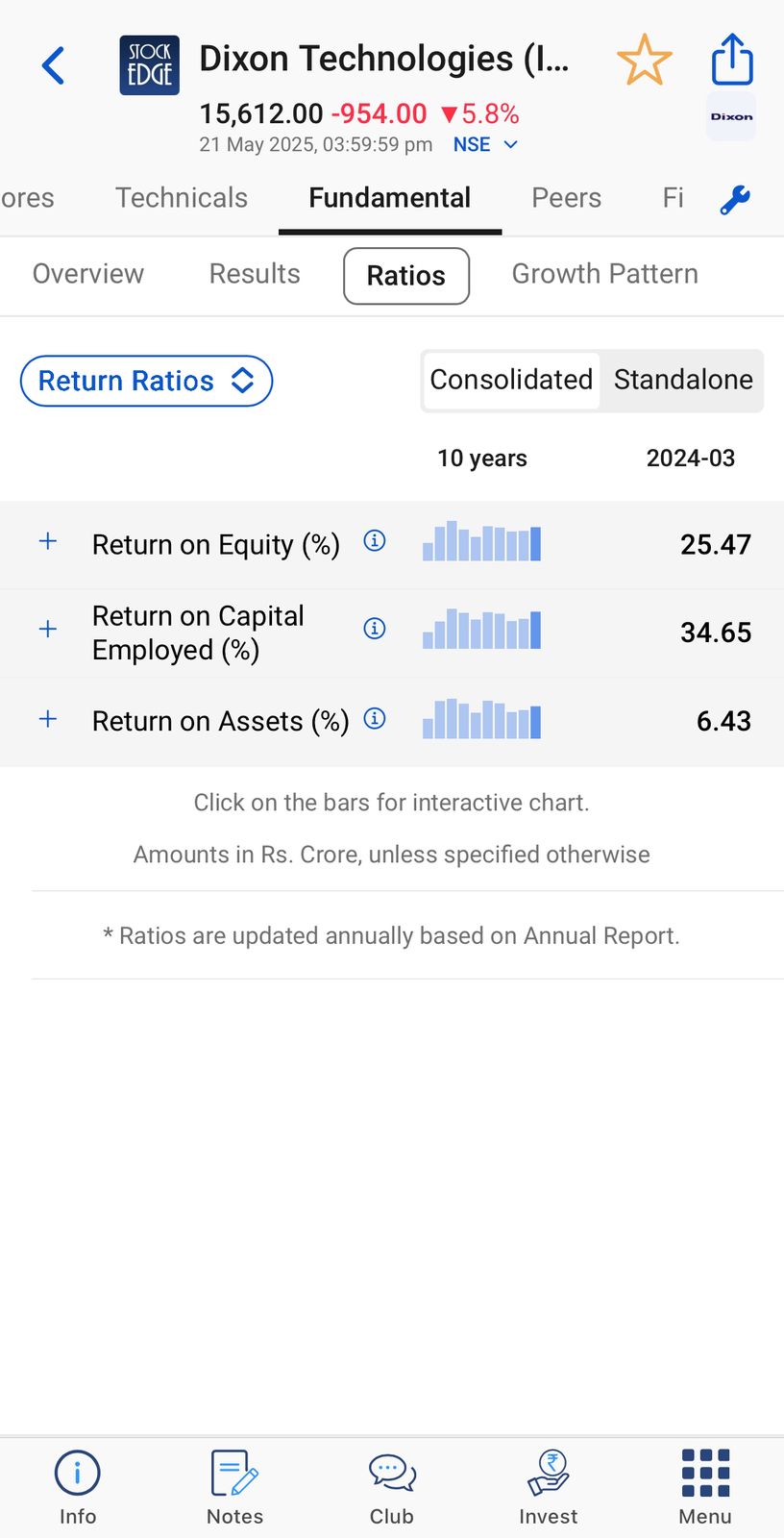Key Takeaways
- Semiconductors: Semiconductors are minuscule chips, even smaller than a virus, yet they are integral to the functioning of modern devices like smartphones, cars, and laptops. It is also called the tiny powerhouses.
- Global Shortage Highlights: A worldwide shortage of semiconductors has disrupted industries, especially automotive, underscoring their critical role in the global economy.
- India’s Strategic Push: To reduce dependency on imports and meet growing demand, India is investing heavily in semiconductor manufacturing, aiming to become a significant player in the global supply chain.
- Investment Considerations: When evaluating semiconductor stocks, consider factors such as the company’s role in the supply chain, technological capabilities, and alignment with government initiatives.
- Top Picks:
- Dixon Technologies
- Tejas Networks
- CG Power
- VA Tech Wabag
- Tata Elxsi
- Key Takeaways
- What is a Semiconductor?
- Uses of semiconductor
- Sectors with High Usage of Semiconductors
- Industry Overview: Semiconductor
- Why There is a Global Shortage of Semiconductors?
- How India Plans to Tackle Global Demand?
- Why Invest in Semiconductor stocks in India
- Factors to Consider Before Investing in Semiconductor Stocks in India
- Best 5 Semiconductor Stocks in India
- Conclusion
- Frequent Asked Questions (FAQ)
If you have been following the news over the last 2-3 years, you have likely seen the following headlines.

Source: FOF Presentation PPFAS
So, what actually is this semiconductor? How is it impacting the global auto industry to the tune of $61 bn in 2021? This blog entirely focuses on that. Not just that, with this blog unlocking the mystery of semiconductors, I will also focus on semiconductor stocks in India and how to analyse them.
Semiconductors in simple languages are the chips that make your gadgets do things that they do. From your TV to your car, from your phone to complex data centres, all the brains fit into this chip called a semiconductor. Seemingly, this seems to be a very costly and humongous chip, right? Well, it’s exactly the opposite. The size of a semiconductor chip today is just 5nm (nano-meters). Do you know the size of the coronavirus? Well, that was 10-20 nm – depending on the variant. So, a thing this important is smaller than the size of a virus! Then it would be very costly, right?
See this chart showing the cost of semiconductor chips used in various day-to-day devices.
A brand-new car costs at least INR 7 Lakhs. The semiconductor used in this is just $460 or INR 39,000 – just 5-6% of the overall cost of a base variant car. Practically, the cars using a higher number of semiconductors will be the higher cars, so definitely the cost of semiconductors will be less than 5% of the overall cost of a car.
Now, think about it: a chip so small (smaller than a virus) and so insignificant in terms of cost has brought all the automobile manufacturers to their knees due to the shortage. Sounds weird, right?
To top it all off, sand is the base material for semiconductor chips. I’m not joking. There’s more on this in the blog.
This is exactly what makes understanding the semiconductor industry so interesting as well as important.
What is a Semiconductor?
Let’s start with your morning schedule. If you are an office-going person, chances are you will start your day with an alarm clock and then switch on the lights in your room. If you’re a tech enthusiast, you’ll use an electric toothbrush, have your breakfast using a toaster or a microwave, and finally, use a car to get to your office to work the entire day on a laptop. If somebody asks what is common across all devices, the safest answer is semiconductors.
Uses of semiconductor
Semiconductors in today’s world are used across our daily routines. The alarm clock will use a semiconductor to know the time and play the sound at a particular time (those who are not old fashioned like me and use a phone as an alarm, chill; it functions in a similar way). The same goes with an electric toothbrush; it needs a semiconductor to know what is the speed at which it needs to rotate. When it comes to a microwave, the semiconductor would send signals to know at what temperature the oven needs to be heated.
The car uses semiconductor chips to control automatic functionality, such as your basic screen interface (where you use audio, videos, and maps), different driving modes, etc. Your phone is the ultimate user of semiconductor chips, with an iPhone using as many as 160 semiconductor chips in a single phone.
Semiconductors are made from a special type of sand called quartz, which has a high silicon content and is abundantly found in the earth’s crust.
Now, silicon is extracted from this sand to create silicon bars or cylinders, which are chipped into nano plates—ultimately, on which all the magic happens. The magic here is the transistors that fit on these silicon chips in specific designs and send and receive electrical signals to get the gadget going.
The process of creating a Semiconductor chip looks something like this:
There are 4 parts to semiconductor manufacturing:
- Designing – We need to design both how different components will be placed on the chips and the software. This is crucial as manufacturing is a costly process, and designing to align billions of transistors on a single semiconductor is a complex process (Yes, you read it right—billions!).
Fun fact: Moore’s Law (it’s rather an expectation than a Law) by Gordon Moore, Co-founder of Intel, once stated that the number of transistors on a chip will approximately double every two years. This is an indication that the computing power of chips will double every two years. See the increase in a number of transistors in the Apple chip:
ARM, ASML, Synopsys, Siemens, Nvidia, Apple, Qualcomm, and others are global companies that design chips.
Currently, there are no semiconductor stocks in India that are involved in design.
- Fabrication – Once the design is ready, the next step is to get it into manufacturing mode. Factories with huge investments. The one being set up by Tata Electronics and Taiwan’s Powerchip Semiconductor Manufacturing Corp is estimated to cost about INR 91,000 crores.
Taiwan is the world leader in chips, led by the Taiwanese company TSMC, which has a 55% market share worldwide.
Currently, there are no semiconductor stocks in India engaged in fabrication.
- Testing and Packaging – Companies like Advantest, Teradyne and Amkor Technologies are involved in the testing and packaging of the semiconductors.
- Finally, in the assembly stage, the manufactured chips are shipped to the equipment makers to be installed in the device.
As investors, we are interested in finding semiconductor stocks in India that are involved in the above process and can generate wealth for us.
Sectors with High Usage of Semiconductors
As per the research report by the Semiconductor Industry Association, the demand for semiconductors is as shown.
As widely known, computer and communication devices have the most demand for semiconductors. With increasing connectivity and computing power, semiconductors are increasingly being used in industrial activities as well.
Semiconductor stocks in India catering to these sectors, including recent volume shockers, can create huge wealth for investors in times to come.
Industry Overview: Semiconductor
The Indian semiconductor market is worth $34.3bn and is expected to grow at a staggering 20% CAGR for the next 10 years to reach $100.2bn by 2032. The use of semiconductors in areas like safety, electrification, networking, and communication is expected to increase as electric vehicles (EVs) gain popularity and production in India.
However, with growing demand currently, the world, as well as India, is experiencing a shortage of semiconductors.
In 2022, there was a shortage of 22mn silicon chips (wafers). This shortage started with the COVID crisis. The chain of events for the chip shortage is very easy to understand.
Why There is a Global Shortage of Semiconductors?
During COVID-19 (2019-2022), initially, automakers, who were very prominent customers of semiconductor chips, started to pare down their chip orders to fabrication companies as they expected slower demand due to work-from-home and COVID restrictions.
However, as the lockdown opened, no one had imagined the rise in industry demand.
The increase was not only in the number of cars demanded but also in the features of these new-age cars. These were possible only with semiconductors. Since there were no semiconductor stocks or manufacturers in India, the majority of the demand was for imports.
This led to modification of the guidance for order by global players, and hence, the supply chain had to be restructured. Added to this were geopolitical tensions like the Ukraine-Russia and Israel-Hammas wars. All of this dented the supply chain mechanics of semiconductor manufacturing, and hence, there was/ is a shortage of semiconductors.
Now that you understand the various processes in manufacturing a semiconductor chip, you can understand the complexity of the supply chain using the chart below.
As you can see, no single country or state does the entire value chain; for example, the US is very prominent in software and designing while, Taiwan is into fabrication (manufacturing) – 63% market share hence there is a requirement of a lot of import and export necessitating seamless supply chain – which is a challenge in the current geopolitical dynamics. Semiconductor stocks in India are affected by this as well.
How India Plans to Tackle Global Demand?
Due to the semiconductor shortage, the estimated loss in revenue in the year 2021 alone was $110 bn. India, with its skillful and reasonably priced labor can tap this market and create wealth.
Some of the semiconductor stocks in India, like Bharat Electronics (BEL) have been in manufacturing of semiconductors which are used by ISRO, however, the scale and technology is not up to the current requirements in hi-tech devices. Today, 90% of the Indian semiconductor demand is met by imports from Taiwan, China, South Korea and the US.
Hence the Government of India, under its Digital India programme is giving incentives like the Production Linked Incentive (PLI) scheme, which will provide subsidies to companies entering semiconductor manufacturing. India’s Semiconductor Mission will have an outlay of INR 76,000 crores for boosting semiconductor production in India. The results for this are:
- Micron Technology Inc. has committed to set up a $2.75bn semiconductor assembly and test facility in India.
- Applied Materials (US based semiconductor equipment manufacturer) will diversify its operations in India for easy availability of manufacturing equipment.
- Japan has also agreed to share the technology, research and innovation papers with India to bolster the semiconductor mission in India.
- In order to establish an outsourced semiconductor assembly and testing (OSAT) facility in Gujarat, India, the Murugappa Group’s CG Power and Industrial Solutions Ltd. (CG Power) has partnered with Renesas Electronics America Inc. (Renesas) and Stars Microelectronics (Thailand) Public Co. Ltd. (Stars).
- Tower Semiconductor, an Israeli chipmaker, is about to close a deal to setup a INR 68,000 cr ($8 billion) fabrication facility in India.
- Tata Electronics will set up INR 27,000 crores assembly and testing unit in Assam.
- Tata Electronics Pvt Ltd. (TEPL) along with Powerchip Semiconductor Manufacturing Corporation (Tawin) will set up a fabrication facility in Gujarat at an estimated cost of INR 91,000 crores.
The next 5-10 years look very promising for the semiconductor stocks in India.
Why Invest in Semiconductor stocks in India
Considering the shortage of supply, major interest in the Indian market, and government support for the semiconductor industry, the semiconductor stocks in India make a valid proposition as a long-term investment theme.
Factors to Consider Before Investing in Semiconductor Stocks in India
Like any other stock/ theme investing, investing in semiconductor stocks in India also requires a stringent checklist approach. You must not miss the following prior to investing in semiconductor stocks in India especially in volume shockers which have recently witnessed significant trading activity.
- Financial Strength: The investee company should be financially sound. The sales growth should be above the industry average. The ROE should be higher than 12%, and the company should have debt under manageable levels. This will ensure lower volatility in the stock of the investee company.
- Macro analysis: Semiconductor theme investing is impacted by various macro variables like supply chain dynamics, global demand and war, etc. Hence one needs to stay updated about the global economy.
- Risk mitigation: Diversification across the industry within the semiconductor theme can help one stay safer from market volatility. As we know various industries like designing, manufacturing, testing and packaging, spreading your investments across can give you a holistic portfolio in the semiconductor theme. However, the challenge is, presently, we do not have many listing semiconductor stocks in India. The cyclical nature of the semiconductor industry also gives a case for appropriate diversification at the overall portfolio level.
- Regulatory risk: Semiconductor manufacturing is a capital-intensive process, and it is very dependent on government subsidies and support. A change in the government’s focus on the industry can impact its growth.
- Supply Chain: As already discussed, the supply chain is crucial in this industry since designing, manufacturing, and testing are all located on separate continents. Hence, disruption in the supply chain due to war or sanctions can impact the industry’s growth.
Best 5 Semiconductor Stocks in India
Now, since we know the process of semiconductor manufacturing, let us divide our stock study according to the industry. Please note that the semiconductor industry is in a nascent stage in India, and semiconductor stocks in India including top gainers have a small portion of their revenues dedicated to this. However, in the future, we will see revenue rising as this industry picks up pace in India.
1. Dixon Technologies
Dixon is an Electric Manufacturing Services company that builds electric equipment like mobiles on a contractual basis (called contract manufacturers). The company uses semiconductors in the assembly chain to manufacture various devices, such as ACs, Fridges, Mobile phones, etc.
- Profitability-The company has had a good ROE of 25.47%+ for the last 10 years.

- Sales growth- The company has grown its sales at a CAGR of 33.7% for the last 5 years.
- Debt to Equity- The company runs a manageable debt-to-equity of 0.09x.
- Valuation– Dixon is currently trading at a rich PE (TTM) of 113.64x. (10-year median 109.5x).
2. Tejas Network
Tejas Networks designs and manufactures wireless network products. In 2024, the company set up a subsidiary, Saankhya Labs, to develop a system-on-chip for 5G telecom infrastructure. Tejas Network is a part of Tata Group (via Panatone Finvest Ltd.). Let us look at the company’s fundamentals.
- Profitability– The company has a very low return on equity due to it being in the investment phase.
- Sales growth– The company has compounded its sales at 19% p.a. for the last 10 years.
- Debt- As of FY23, the company had no debt; however, as of 31 March 2025, the company has 1,906 crores of debt for expansion purposes. The debt is manageable, considering the parent is a reliable corporate group.
- Valuation– The company is trading at a PE of 29.23 (as of May 2025), higher than the 5-year median of 45.7x. The exciting opportunity that lies ahead for the company has led to the re-rating. Investors should wait for the right valuation to make an investment in any of the semiconductor stocks in India.
3. CG Power
CG Power is owned by Murugappa group, and has recently entered into the Outsourced Semiconductor Assembly and Test market which is a $13bn market globally. The company will invest 7,600 crores in the manufacturing facility over the next 5-years. The company is currently in the business of designing, manufacturing and marketing of products related to power generation, transmission and rail. Let’s look at its financials.
- Profitability– The company has a healthy return on equity of 36.44%.
- Sales Growth– The company has remained flat over the last 5-years. The reason is that the company had demerged its consumer electrical products business in 2016, which today itself has a revenue of 9,908 crores.
- Debt– The company has a manageable debt-to-equity of 0.36x.
- Valuation– The company is trading at a PE of 57.79x, lower than the 10-year median of 67.2x.
4. VA Tech Wabag
The company is engaged in the water treatment field. Fact: A 30 cm semiconductor wafer requires 2200 gallons (8,800 liters) of clean water. Therefore, if semiconductor fabrication needs to boom in India, a support from the water treatment companies is essential. Therefore, VA Tech Wabag can be a great semiconductor stock in India. Let’s look at its existing financials.
- Profitability– Currently (FY24), the company has an ROE of 14.76%.
- Debt– The company has a low debt-to-equity ratio of 0.15x.
- Sales growth– The company has grown its sales at a CAGR of 2% for the past 10 years.
- Valuation– The company is trading at a PE of 32.62 (as of May 2025), almost at par with the industry PE of 33.52.
5. Tata Elxsi
Tata Elxsi is an ER&D (engineering research and development) player that supports various designers in designing semiconductor wafers. This is a crucial process as we have seen – more the transistors fit onto a semiconductor chip – better is the computing power. Today not a significant share of revenue is into designing semiconductors, however with the advent of Tata Electronics semiconductor chip, possibility of good order in-flows in the next 4-5 years is a possibility. Let’s look at the fundamentals of the company.
- Profitability– The company has an ROE of 34.62%, higher than industry average.
- Sales– Sales of Tata Elxsi have grown at a CAGR of 16% p.a. for the last 10-years.
- Debt– The company is debt free
- Valuation – Shares of Tata Elxsi are trading at a PE of 48.94x, lower than the 10-year median of 58.9x.
Conclusion
Semiconductor stocks in India are in a sunrise industry that is expected to boom over the next 5-10 years. However, no significant player is into this sector today, however many companies, including the ones listed here will be a direct or indirect beneficiary of the semiconductor sector developing in India. With proper policies in place, one can expect India to be a semiconductor supplier to the world, a feat achieved only by Taiwan and China today.
Frequent Asked Questions (FAQ)
1. Are semiconductor stocks a good investment?
Semiconductor shares can be a good bet because of increased demand for electronics, AI, and electric cars. They have growth prospects but can be volatile due to supply chain problems and trade tensions. Research and a long-term perspective are essential prior to investment in this space.
2. Who should invest in semiconductor shares in India?
Investors with greater risk tolerance and an interest in technology expansion should invest in semiconductor stocks in India. Those interested in long-term returns from the growing electronics and digital segment can gain, but must be able to withstand market variation and industry cycles










